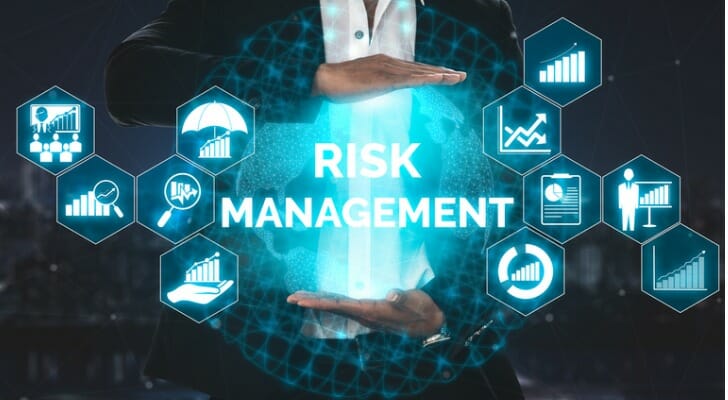 Banks, brokerages, insurers and even some government agencies spend significant resources to identify, assess and mitigate financial risk. One of the top certifications for professionals in this line of work is the professional risk manager certification (PRM). Here’s what you should know about the certification, how to get it, the fees entailed, and what it equips designees to do.
Banks, brokerages, insurers and even some government agencies spend significant resources to identify, assess and mitigate financial risk. One of the top certifications for professionals in this line of work is the professional risk manager certification (PRM). Here’s what you should know about the certification, how to get it, the fees entailed, and what it equips designees to do.
How to Become a Professional Risk Manager
You can become a PRM through the Professional Risk Managers’ International Association (PRMIA). Applicants who have a graduate school degree or are chartered financial analysts (CFA) are eligible, as are those with a bachelor’s degree and two years of full-time work experience, or those who have four years of full-time work experience. Work experience must be associated with the financial services industries or in the risk management department of any industry. They must also have a current PRMIA membership.
The PRM enrollment period begins the day you submit your successful PRM application. There is a 36-month enrollment period set to allow candidates 9-12 months of study before the exams are attempted. To receive the certification, candidates must complete the PRM Designation program within three years of initial enrollment, and pass all required exams within a two-year period.
The application fee to enroll in the PRM Program is $150. The PRM Program fee is $1,080. However, there is an additional charge if you retake the exam.
The Exams to Become a PRM
The PRM exams were recently updated, and now there are two exams instead of four. If you are a CFA or were in a PRMIA-accredited university program, you may be able to skip taking Exam 1.
The tests are 100% multiple-choice questions. Exam 1 has 60 questions, and Exam 2 has 84 questions. Exam 1 tests candidates on their knowledge of finance theory, instruments and markets, as well as their ability to apply the mathematical foundations of risk measurement.
Exam 2 tests candidates on their knowledge of risk management frameworks, asset liability management, funds transfer pricing, the specific risk areas of operational risk, credit risk, counter-party credit risk, and market risk, as well as the PRMIA standards and governance. It also includes a Practicum Assessment that assesses the ability to apply lessons learned from the PRMIA case studies using knowledge from across the PRM syllabus.
In order to maintain the designation, certificate holders need to have a Sustaining PRMIA Membership, which costs $200, and complete 20 Continuing Risk Learning (CRL) credits each year.
How Important Is the Certification?

The PRM certification is a well-respected credential for risk management professionals and is designed to help those professionals develop a detailed understanding of financial risk management. The designation can be helpful for all types of risk managers, as well as financial analysts and CEOs since the program prepares candidates with skills that are considered important by business professionals.
The designation shows that an individual has experience with and a depth of knowledge about risk management best practices and the finance theory underpinning risk management. PRM designees work for large banks and corporations, universities, government agencies, and other non-financial organizations. These include Credit Suisse, Deloitte, Ernst & Young, First Derivatives, HSBC, ING, KPMG, National Bank of Canada, and UBS.
The program combines advanced academics and practical application, which prepares a candidate for all aspects of any job. However, this certification may be the best fit for individuals more focused on the quantitative aspect of financial risk management. Fewer than 20% of professionals hold a PRM degree, which may give PRMs a competitive edge compared to others in the industry.
Other Risk Management Certifications
Certified Risk Manager (CRM)
The CRM certification is offered by the National Alliance for Insurance Education and Research. The CRM designation is valuable because it shows a proven understanding of risk management, including how to measure and analyze risk, minimize operational risks and potential losses, and implement risk management processes within an organization.
In order to become a CRM, you need to take five courses, each lasting two and a half days. At the end of each course, you have the option to take the two-hour exam associated with that course. As of 2020, the cost per course ranges from $430 to $440. You need to take all five courses and pass all five exams within five calendar years of passing your first CRM exam.
Financial Risk Manager (FRM)
The FRM is offered by the Global Association of Risk Professionals. Unlike other, more generalized financial certifications, the FRM focuses only on financial risk management. This person specializes in understanding risk, evaluating the scope of that risk and how it might impact a firm’s operation, and pricing that risk into a firm’s decisions. Many FRMs work in firms such as banks, insurance companies and consulting firms.
The GARP puts the cost of taking the first part of the FRM exam at $750 for those who apply six months or more in advance. That includes a $400 enrollment fee and the $350 exam fee. For those applying two months to 90 days in advance, the exam cost jumps to $875, with the exam fee rising to $475. The enrollment fee is waived for the second part of the exam, but the $350 to $650 exam fees remain.
Certified Risk Management Professional (CRMP)
The CRMP is offered by DRI International to applicants with more than two years of risk management experience. The CRMP certification is designed for individuals with a specialized background in risk management. The designation shows that a person possesses the knowledge and experience required to implement and manage a business risk management program.
To become a CRMP, individuals first must pass the Risk Management Continuity course and the Risk Management Examination. In addition, they must complete the Online Application for Professional Certification on DRI International’s website and have references confirm their two years of experience. As of 2020, the cost of applying for the CRMP certification is $400 and the annual fee to maintain the certification is $200.
Associate Risk Management Professional (ARMP)
The ARMP certification is offered by DRI International and is designed for individuals who are new to risk management or have less than two years of risk management experience. Beginning your career in risk management by getting an ARMP certification can show others in the field how dedicated you are to succeeding in the risk management industry.
In order to become an ARMP, individuals must pass the DRI Risk Management Continuity course and the Risk Management Examination. As of 2020, the cost of the ARMP application fee is $200 and the annual fee to maintain the certification is $175. The cost of the Risk Management Continuity Course and Risk Management Examination is $2,750.
The Bottom Line

The PRM certification is a good fit for people who want to showcase their ability with risk management tools, techniques, theories, and principles. The designation was designed for financial analysts, risk managers, chief risk officers, and CEOs. Only individuals with adequate work or educational backgrounds are eligible to receive this designation.
If you are a professional in the risk management field, the PRM designation may be a good fit for you. However, it would be prudent to look into all of the available designations in your field to figure out which is the best fit for you and your career goals. If you need to find a risk manager, consider working with a PRM.
Tips for Handling Financial Risk
- A financial advisor with risk management training can help you assess and mitigate risk as you make personal finance decisions. Finding a financial advisor doesn’t have to be hard. SmartAsset’s free tool matches you with up to three vetted financial advisors who serve your area, and you can interview your advisor matches at no cost to decide which one is right for you. If you’re ready to find an advisor who can help you achieve your financial goals, get started now.
- There are many different types of risk managers, including PRMs. Take the time to research the various designations to ensure you’re working with the right type of risk manager. You can also use this calculator align your asset allocation with your risk tolerance.
Photo credit: ©iStock.com/AJ_Watt, ©iStock.com/Blue Planet Studio, ©iStock.com/Martin Barraud